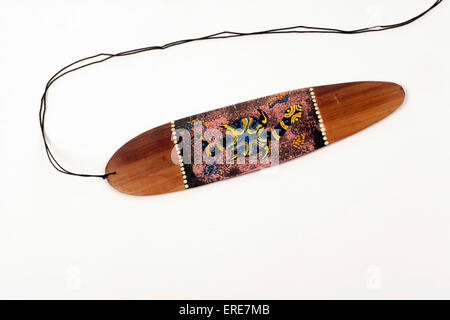Unlocking the Secrets of the Ancient Australian Aerophone: A Journey Through Time and Sound
Unlocking the Secrets of the Ancient Australian Aerophone: A Journey Through Time and Sound

The Australian continent boasts a rich and diverse cultural heritage, deeply entwined with its unique landscape and indigenous people. Among the many facets of this heritage, the ancestral aerophones of Australia stand out as a fascinating testament to the ingenuity and artistry of its first inhabitants. These instruments, crafted from natural materials and imbued with spiritual significance, are not just musical tools, but windows into the ancient worldviews and traditions of the Aboriginal people.
A Symphony of Wind and Wood:
Related Articles: Unlocking the Secrets of the Ancient Australian Aerophone: A Journey Through Time and Sound
- A Tapestry Of Cultures: Exploring The Diverse Tribes And Languages Of Western Australia
- The Aboriginal Flag: A Tapestry Of Land, Spirit, And Connection
- Unraveling The Tapestry Of Aboriginal Surnames: A Journey Through History And Identity
- Unlocking The Past: The Rediscovery Of A Lost Language In South Australia
- Totemism: A Journey Through Symbols Of Identity And Ancestry
Aerophones, instruments that produce sound through the vibration of air, are found across the globe in various forms. In Australia, these instruments take on a distinct character, reflecting the unique environment and cultural values of the continent. While the exact origins of these instruments are shrouded in the mists of time, their presence in archaeological records and oral traditions provides valuable insights into their historical significance.
Diverse Forms, Unified Purpose:
Australian ancestral aerophones come in a variety of shapes and sizes, each with its own unique sound and purpose. Some of the most common types include:
- Didgeridoo: Perhaps the most iconic of Australian instruments, the didgeridoo is a long, hollow wooden tube played by blowing air into one end, creating a drone-like sound. Traditionally crafted from eucalyptus trees, the didgeridoo is not just a musical instrument but also a sacred object, used in ceremonies, healing rituals, and storytelling.
- Yidaki: Another name for the didgeridoo, particularly in the Yolngu language of Arnhem Land, where it holds significant cultural and spiritual importance.
- Bullroarer: This simple but effective instrument is made from a flat piece of wood tied to a string. When swung through the air, it creates a loud, buzzing sound. Bullroarers were used in ceremonies, hunting, and communication, and their distinctive sound often played a role in initiation rites.
- Kulama: This wind instrument, common in the western desert regions of Australia, is made from a hollow gourd or a piece of wood. The kulama is played by blowing across a small hole, producing a high-pitched, whistling sound. It is often used in ceremonies and dances, and its sound is said to represent the voices of spirits.
- Pungi: This instrument, found in the Northern Territory, is made from a gourd with a reed inserted into a hole. The pungi is played by blowing into the reed, producing a raspy, nasal sound. It is often used in ceremonies and dances, and its sound is said to represent the voices of animals.

Beyond the Sound:
These instruments are more than just tools for making music. They embody a profound connection to the land, the ancestors, and the spirit world. Their use in ceremonies, rituals, and storytelling highlights their crucial role in maintaining cultural identity and transmitting knowledge across generations.
The Didgeridoo: A Case Study:

The didgeridoo, with its unique sound and cultural significance, serves as a prime example of the deep connection between music and spirituality in Aboriginal Australia. Its circular breathing technique, which allows for continuous drone, is considered to mimic the breath of life itself. The didgeridoo’s sound is often associated with the voices of ancestors, spirits, and even the earth itself.
Modernity and the Legacy of the Aerophone:
Despite the challenges of colonization and cultural assimilation, the ancestral aerophones of Australia continue to thrive. Contemporary musicians are using these instruments to explore new musical possibilities, while communities continue to maintain traditional practices and knowledge. The didgeridoo, in particular, has gained international recognition, becoming a symbol of Australian culture and a testament to the enduring power of tradition.
Preservation and Transmission:
The preservation and transmission of knowledge about these instruments is crucial for ensuring the survival of Aboriginal culture. Organizations and initiatives are working to document and share the history and significance of these instruments, fostering understanding and appreciation for the rich cultural heritage they represent.
Beyond Music: The Aerophone as a Cultural Touchstone:
The ancestral aerophones of Australia are not just musical instruments; they are cultural touchstones, reflecting the beliefs, values, and artistic expressions of the Aboriginal people. Their study provides a valuable lens for understanding the history, spirituality, and resilience of a unique and vibrant culture.
FAQ:
Q: What are some of the most common types of Australian ancestral aerophones?
A: The most common types include the didgeridoo, bullroarer, kulama, and pungi.
Q: What is the significance of the didgeridoo in Aboriginal culture?
A: The didgeridoo is a sacred object, used in ceremonies, healing rituals, and storytelling. Its sound is often associated with the voices of ancestors, spirits, and the earth itself.
Q: How are ancestral aerophones used in modern Australia?
A: Contemporary musicians are using these instruments to explore new musical possibilities, while communities continue to maintain traditional practices and knowledge. The didgeridoo, in particular, has gained international recognition.
Q: What are some organizations working to preserve and transmit knowledge about ancestral aerophones?
A: Various organizations and initiatives are dedicated to documenting and sharing the history and significance of these instruments, including museums, cultural centers, and community groups.
Q: How can I learn more about the ancestral aerophones of Australia?
A: You can explore museums, cultural centers, and online resources dedicated to Aboriginal culture. You can also attend workshops and performances featuring traditional instruments and music.
The Legacy Continues:
The ancestral aerophones of Australia are a testament to the enduring power of tradition, innovation, and connection to the land. They offer a glimpse into the rich and complex cultural heritage of the Aboriginal people, reminding us of the importance of preserving and celebrating the diverse voices of our world.

Closure
Thus, we hope this article has provided valuable insights into Unlocking the Secrets of the Ancient Australian Aerophone: A Journey Through Time and Sound. We thank you for taking the time to read this article. See you in our next article!


